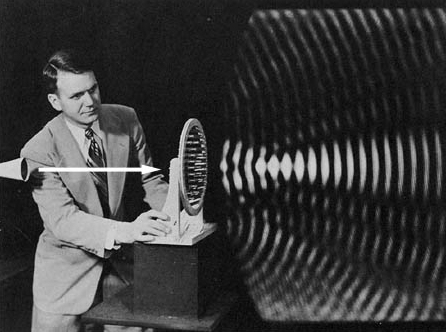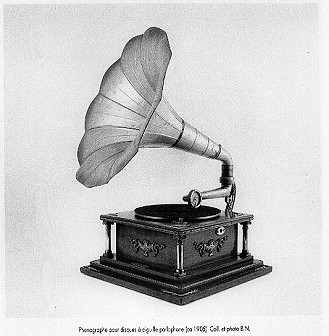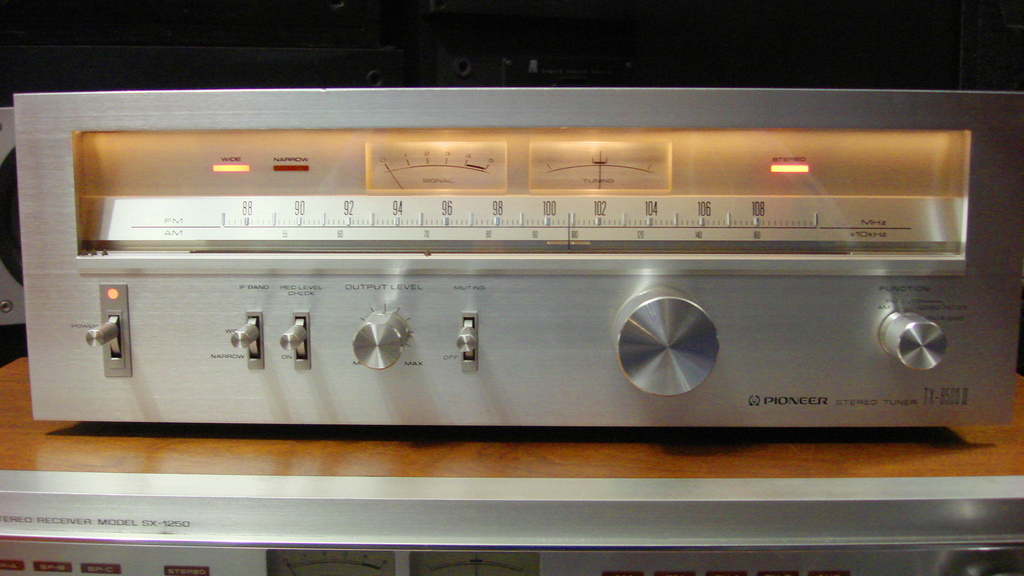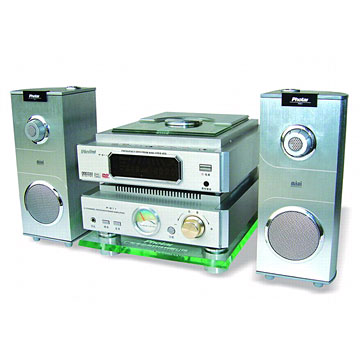The acoustics designate the Branch of physique than study the sound propagation; an area always studied since antiquity. So, the acoustics of buildings where there was orators or players presentations was very analyzed, as Cathedrals and opera house.
The developpement of pre and post acoustics is possible thanks to two men, Bell and Fourier.
Beginning
The1920s saw the introduction of electronic amplification, microphones, and the application of quantitative engineering principles to the reproduction of sound. Much of the pioneering work was done at Bell Laboratories and commercialized by Western Electric.Acoustically-recorded disc records with capriciously peaky frequency response were replaced with electrically recorded records.
Meanwhile, the rise of radio meant increased popularity for loudspeakers and tube amplifiers, so there was a period of time during which radio receivers commonly used loudspeakers and electronic amplifiers to produce sound, while phonographs were still commonly purely mechanical and acoustic.
50´s, 60´s, 70´s and actuality
After World War II several innovations created the conditions for a major improvement of home-audio quality:
-Reel-to-reel audio tape recording, based on technology found in Germany after the war, helped musical artists such as Bing Crosby make and distribute recordings with better fidelity.
-The advent of the 33⅓ RPM Long Play (LP) microgroove vinyl record, with low surface noise and quantitatively-specified equalization curves. Classical music fans, who were opinion leaders in the audio market quickly adopted LPs because, unlike with older records, most classical works would fit on a single LP.
-FM radio, with wider audio bandwidth and less susceptibility to signal interference and fading than AM radio, though AM could be heard at longer distances at night.
-Better amplifier designs, with more attention to frequency response and much higher power output capability, allowing audio peaks to be reproduced without distortion.
In the 1950s, the term high fidelity began to be used by audio manufacturers as a marketing term to describe records and equipment which were intended to provide faithful sound reproduction. While some consumers simply interpreted high fidelity as fancy and expensive equipment, many found the difference in quality between "hi-fi" and the then standard AM radios and 78 RPM records readily apparent and bought 33 LPs, such as RCA's New Orthophonics and London's ffrrs, and high-fidelity phonographs. Audiophiles paid attention to technical characteristics and bought individual components, such as separate turntables, radio tuners, preamplifiers, power amplifiers and loudspeakers. Some enthusiasts assembled their own loudspeaker systems. In the 1950s, hi-fi became a generic term, to some extent displacing phonograph and record player.
In the late 1950s and early 1960s, the development of the Westrex single-groove stereophonic record led to the next wave of home-audio improvement, and in common parlance, stereo displaced hi-fi. Records were now played on a stereo. In the world of the audiophile, however, high fidelity continued and continues to refer to the goal of highly-accurate sound reproduction and to the technological resources available for approaching that goal. This period is most widely regarded as "The Golden Age of Hi-Fi", when tube equipment manufacturers of the time produced many models considered endearing by modern audiophiles, and just before solid state equipment was introduced to the market, subsequently replacing tube equipment as mainstream.
A very popular type of system for reproducing music from the 1970s onwards was the integrated music centre which combined phonograph, radio tuner, tape player, preamp and power amplifier in one package, often sold with its own separate, detachable or integrated speakers. These systems advertised their simplicity; the consumer did not have to select and assemble the individual components.
But for professional acoustics the separate of the frequency of speakers, and the multicanal transmision generate problems as diphonies.
When high fidelity was limited to monophonic sound reproduction, a realistic approximation to what the listener would experience in a concert hall was limited. The general clarity of the sound, however, was not any less than with stereophonic sound reproduction. Researchers quickly realized that the ideal way to experience music played back on audio equipment was through multiple transmission channels, but the technology was not available at that time. It was, for example, discovered that a realistic representation of the separation between performers in an orchestra from an ideal listening position in the concert hall would require at least three loudspeakers for the front channels. For the reproduction of the reverberation, at least two loudspeakers placed behind or to the sides of the listener were required.
Stereophonic sound provided a partial solution to the problem of creating some semblance of the illusion of performers performing in an orchestra by creating a phantom middle channel when the listener sits exactly in the middle of the two front loudspeakers. When the listener moves slightly to the side, however, this phantom channel disappears or is greatly reduced. An attempt to provide for the reproduction of the reverberation was tried in the 1970s through quadraphonic sound but, again, the technology at that time was insufficient for the task. Consumers did not want to pay the additional costs required in money and space for the marginal improvements in realism. With the rise in popularity of home theatre, however, multi-channel playback systems became affordable, and many consumers were willing to tolerate the six to eight channels required in a home theatre. The advances made in signal processors to synthesize an approximation of a good concert hall can now provide a somewhat more realistic illusion of listening in a concert hall.
The first systems conceivable to people are stereo chain, that were possible thanks to birth of LP discs. The arrived of CD, in 1980, mark the end of vinyl discs, and that permit the fabrication of high fidelity products more compact and an better signal-noise quality.
Apparition of new tecnics of compression conduced fabricants to propose adapted systems at these innovations. Today, some modern equips can be connect with optic fibre, USB ports, TOSLINK cables and WiFI support. High fidelity systems are actually compacts, in the same device where are all the elements of the system, except for speakers.
In 2000, digital electronic has permitted new designs of high fidelity chains, for example, mini components with USB connectors for MP3. But the majority of these products don’t have all the high fidelity critters. Actually several fabricants, as Cabasse, Focal JMlab o Triangle Industries propose systems of a exceptional quality for the more exigent ears.









